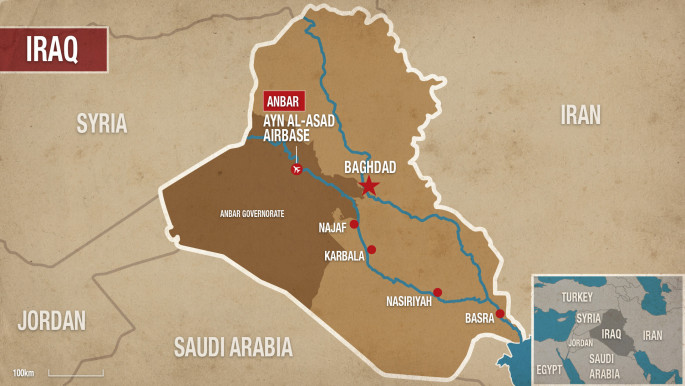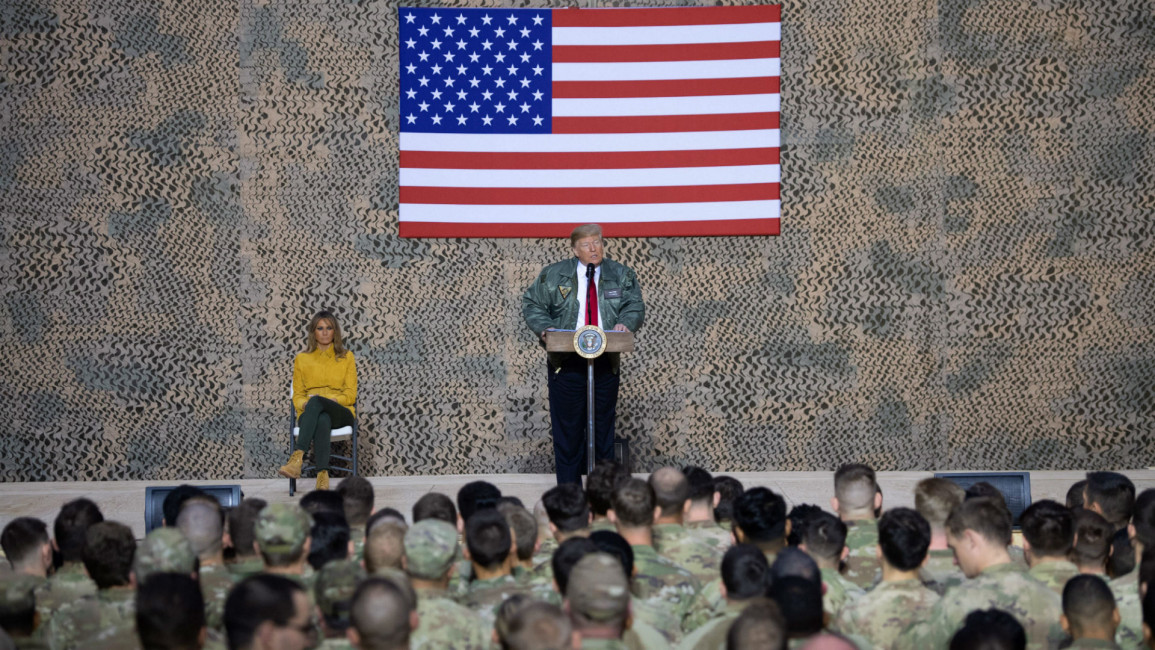Why did Iran target US troops at Iraq's Ain al-Asad, a sprawling Saddam-era military base?
Thirty missiles were launched by the Iranian Revolutionary Guard Corps on a key hub for US forces, Ain al-Assad Airbase, and a military base in Erbil just days after the killing of IRGC’s chief commander Qasem Soleimani in Baghdad in a US drone strike.
The attacks came hours after US Defence Secretary Mark Esper said the United States should expect retaliation over the assassination of the Iranian top general.
Strong US presence
Originally named the Qadisiyah Airbase, Ain al-Asad was the second largest out of five new airbases built in Iraq as part of Project Super-Base, launched in 1975 following the violent and destabilising Arab-Israeli wars of 1967 and 1973.
Built in the mid-1980s, the US contributed some $280million (£213.6million) to the structure, which was led by a consortium of Yugoslavian companies under a contract with the Iraqi government of deposed dictator Saddam Hussein.
It had accommodation for 5,000 personnel as well as a wealth of facilities, including mosques, sports facilities, schools and a hospital, as well as hardened aircraft shelters.
Prior to the 2003 US-led invasion of Iraq, the base housed three units of the Iraqi Air Force, which flew MiG-25s and MiG-21s.
The base was taken in April 2003 during the war by the Australian Special Air Service Regiment and was turned over to the United States army one month later.
Ain Al-Asad became a key convoy hub in the country, with the US military frequently travelling in and out, and fuel and supply trucks using it for fuel.
 |
| Troops pick up missile pieces in Ain al-Asad [Getty] |
A giant sprawling complex, the base is over 100 miles northwest of Baghdad and houses some 1,500 members of the US military (out of over 5,000 stationed throughout Iraq).
It also hosts approximately 70 Norwegian troops, who were at Ain al-Assad during the time of the attack.
The base was used by the tens of thousands of US military forces during Operation Iraqi Freedom, which went on from 2003 to 2011.
It was in that time the United Nations Security Council passed resolution 1546, which resulted in the legal return of sovereignty to an Iraqi-led governing force and ending the occupation.
Strategic importance
Iran’s decision to target Ain al-Asad airbase has strategic importance -- the base hosted both US President Donald Trump and Vice President Mike Pence in the past two years.
Over the Christmas holidays in 2018, Trump stopped there and made remarks to troops during a surprise visit to Iraq, his first journey to a conflict zone since taking office in January 2017.
Speaking about the visit at the time, he said: "I had concerns for the institution of the presidency because — not for myself, personally.
"I had concerns for the first lady, I will tell you. But if you would have seen what we had to go through, with the darkened plane, with all windows closed, with no lights on whatsoever, anywhere — pitch black. I’ve never seen it. I’ve been in many airplanes — all types and shapes and sizes.
"I’ve never seen anything like it."
 |
During Trump’s trip, he defended his decision to withdraw 2,000 troops from Syria. That policy shift sparked concern from allies and spurred James Mattis, his defence secretary at the time, to resign.
US troops trained Iraqi troops at the base, located in Anbar province northwest of Baghdad, as part of Washington's bid to build a force that could mount an offensive against Islamic State militants.
Aside from US and Iraqi forces, the base has also hosted US-led coalition partners Denmark and the United Kingdom.
Historic target
The base is no stranger to attacks.
In 2015, the base came under regular mortar fire from Islamic State militants.
The same year, the air base was attacked by 25 Islamic State fighters, but the Pentagon said at the time that Iraqi security forces guarding the perimeter killed most of the combatants.
Five rockets landed on the air base last month but did not cause any casualties.
The remaining American troops at the base are helping to train Iraqi security forces after the drawdown of combat operations following the defeat of Islamic State.



